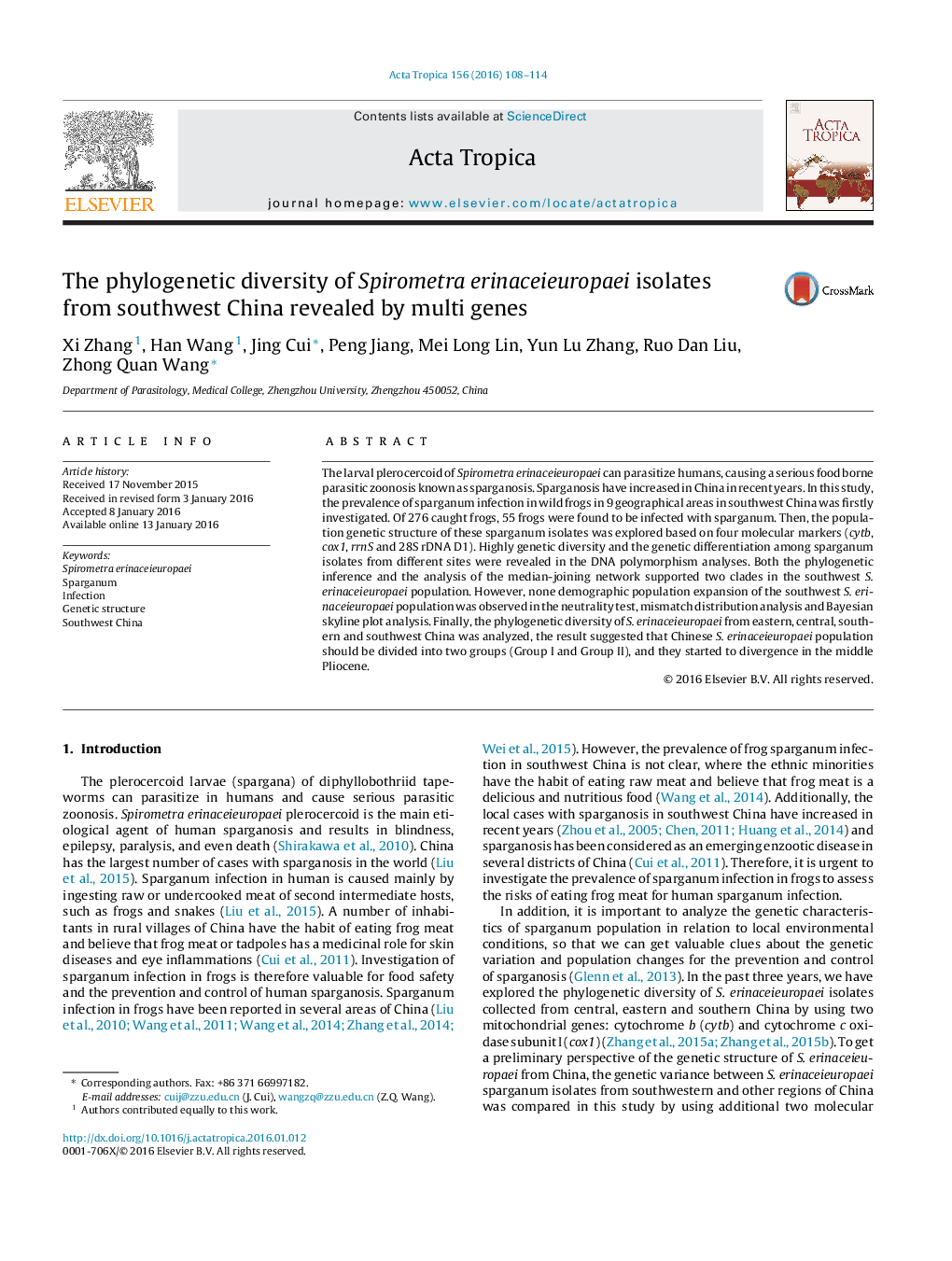| کد مقاله | کد نشریه | سال انتشار | مقاله انگلیسی | نسخه تمام متن |
|---|---|---|---|---|
| 3393752 | 1592768 | 2016 | 7 صفحه PDF | دانلود رایگان |

• The prevalence of sparganum infection in wild frogs in southwest China was 19.93%.
• Both genetic diversity and genetic differentiation among different populations were high.
• Two clades in the southwest population were supported.
• The diversification of Chinese S. erinaceieuropaei occurred in the Quaternary.
The larval plerocercoid of Spirometra erinaceieuropaei can parasitize humans, causing a serious food borne parasitic zoonosis known as sparganosis. Sparganosis have increased in China in recent years. In this study, the prevalence of sparganum infection in wild frogs in 9 geographical areas in southwest China was firstly investigated. Of 276 caught frogs, 55 frogs were found to be infected with sparganum. Then, the population genetic structure of these sparganum isolates was explored based on four molecular markers (cytb, cox1, rrnS and 28S rDNA D1). Highly genetic diversity and the genetic differentiation among sparganum isolates from different sites were revealed in the DNA polymorphism analyses. Both the phylogenetic inference and the analysis of the median-joining network supported two clades in the southwest S. erinaceieuropaei population. However, none demographic population expansion of the southwest S. erinaceieuropaei population was observed in the neutrality test, mismatch distribution analysis and Bayesian skyline plot analysis. Finally, the phylogenetic diversity of S. erinaceieuropaei from eastern, central, southern and southwest China was analyzed, the result suggested that Chinese S. erinaceieuropaei population should be divided into two groups (Group I and Group II), and they started to divergence in the middle Pliocene.
Figure optionsDownload as PowerPoint slide
Journal: Acta Tropica - Volume 156, April 2016, Pages 108–114